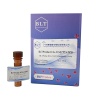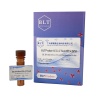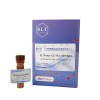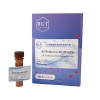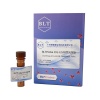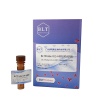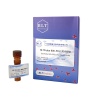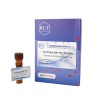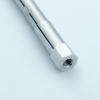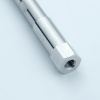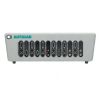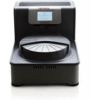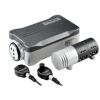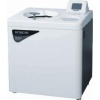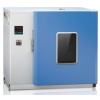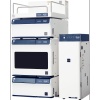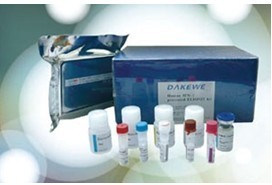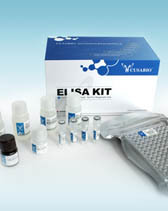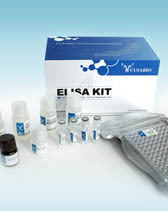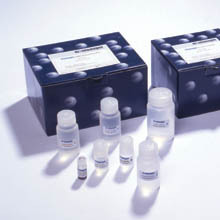



英文名称 phospho-FGFR3 (Tyr724)
中文名称 磷酸化成纤维细胞生长因子受体3抗体
别 名 FGFR3 (phospho Y724); FGFR3 (phospho Tyr724); p-FGFR3 (phospho Y724); ACH; CD 333; CD333; CD333 antigen; CEK 2; CEK2; FGFR 3; Fibroblast growth factor receptor 3 (achondroplasia thanatophoric dwarfism); Fibroblast growth factor receptor 3; Heparin binding growth factor receptor; HSFGFR3EX; Hydroxyaryl protein kinase; JTK 4; JTK4; MFR 3; SAM 3; Tyrosine kinase JTK 4; Tyrosine kinase JTK4; Z FGFR 3.
说 明 书 0.1ml
产品类型 磷酸化抗体
研究领域 肿瘤 细胞生物 信号转导 生长因子和激素 转录调节因子 细胞膜受体
抗体来源 Rabbit
克隆类型 Polyclonal
交叉反应 Human, Mouse, Rat, Dog, Cow, Horse, Rabbit, Sheep,
产品应用 WB=1:100-500 ELISA=1:500-1000 IHC-P=1:100-500 IHC-F=1:100-500 ICC=1:100-500 IF=1:100-500 磷酸化成纤维细胞生长因子受体3抗体(石蜡切片需做抗原修复)
not yet tested in other applications.
optimal dilutions/concentrations should be determined by the end user.
分 子 量 86kDa
细胞定位 细胞浆 细胞膜
性 状 Lyophilized or Liquid
浓 度 1mg/1ml
免 疫 原 KLH conjugated synthesised phosphopeptide derived from human FGFR3 around the phosphorylation site of Tyr724
亚 型 IgG
纯化方法 affinity purified by Protein A
储 存 液 Preservative: 15mM Sodium Azide, Constituents: 1% BSA, 0.01M PBS, pH 7.4
保存条件 Store at -20 °C for one year. Avoid repeated freeze/thaw cycles. The lyophilized antibody is stable at room temperature for at least one month and for greater than a year when kept at -20°C. When reconstituted in sterile pH 7.4 0.01M PBS or diluent of antibody the antibody is stable for at least two weeks at 2-4 °C.
磷酸化成纤维细胞生长因子受体3抗体产品介绍 background:
The encoded protein is synthesized mainly in corticotroph cells of the anterior pituitary where four cleavage sites are used; adrenocorticotrophin, essential for normal steroidogenesis and the maintenance of normal adrenal weight, and lipotropin beta are the major end products. In other tissues, including the hypothalamus, placenta, and epithelium, all cleavage sites may be used, giving rise to peptides with roles in pain and energy homeostasis, melanocyte stimulation, and immune modulation. These include several distinct melanotropins, lipotropins, and endorphins that are contained within the adrenocorticotrophin and beta-lipotropin peptides. Mutations in this gene have been associated with early onset obesity, adrenal insufficiency, and red hair pigmentation. Alternatively spliced transcript variants encoding the same protein have been described.
Function:
Tyrosine-protein kinase that acts as cell-surface receptor for fibroblast growth factors and plays an essential role in the regulation of cell proliferation, differentiation and apoptosis. Plays an essential role in the regulation of chondrocyte differentiation, proliferation and apoptosis, and is required for normal skeleton development. Regulates both osteogenesis and postnatal bone mineralization by osteoblasts. Promotes apoptosis in chondrocytes, but can also promote cancer cell proliferation. Required for normal development of the inner ear. Phosphorylates PLCG1, CBL and FRS2. Ligand binding leads to the activation of several signaling cascades. Activation of PLCG1 leads to the production of the cellular signaling molecules diacylglycerol and inositol 1,4,5-trisphosphate.
Subunit:
Monomer. Homodimer after ligand binding. Interacts with FGF1, FGF2, FGF4, FGF6; FGF8, FGF9, FGF10, FGF17, FGF18, FGF19, FGF20 and FGF23 (in vitro). Interacts with KLB. Affinity for fibroblast growth factors (FGFs) is increased by heparan sulfate glycosaminoglycans that function as coreceptors. Likewise, KLB increases the affinity for FGF19 and FGF21. Interacts with PIK3R1, PLCG1, SOCS1 and SOCS3.
Subcellular Location:
Cell membrane; Single-pass type I membrane protein. Cytoplasmic vesicle. Endoplasmic reticulum. Note=The activated receptor is rapidly internalized and degraded. Detected in intracellular vesicles after internalization of the autophosphorylated receptor.
Tissue Specificity:
Expressed in brain, kidney and testis. Very low or no expression in spleen, heart, and muscle. In 20- to 22-week old fetuses it is expressed at high level in kidney, lung, small intestine and brain, and to a lower degree in spleen, liver, and muscle. Isoform 2 is detected in epithelial cells. Isoform 1 is not detected in epithelial cells. Isoform 1 and isoform 2 are detected in fibroblastic cells.
Post-translational modifications:
Autophosphorylated. Binding of FGF family members together with heparan sulfate proteoglycan or heparin promotes receptor dimerization and autophosphorylation on tyrosine residues. Autophosphorylation occurs in trans between the two FGFR molecules present in the dimer. Phosphorylation at Tyr-724 is essential for stimulation of cell proliferation and activation of PIK3R1, STAT1 and MAP kinase signaling. Phosphorylation at Tyr-760 is required for interaction with PIK3R1 and PLCG1.
DISEASE:
Defects in FGFR3 are the cause of achondroplasia (ACH) [MIM:100800]. ACH is an autosomal dominant disease and is the most frequent form of short-limb dwarfism. It is characterized by a long, narrow trunk, short extremities, particularly in the proximal (rhizomelic) segments, a large head with frontal bossing, hypoplasia of the midface and a trident configuration of the hands.
Defects in FGFR3 are the cause of Crouzon syndrome with acanthosis nigricans (CAN) [MIM:612247]. Classic Crouzon disease which is caused by mutations in the FGFR2 gene is characterized by craniosynostosis (premature fusion of the skull sutures), and facial hypoplasia. Crouzon syndrome with acanthosis nigricans (a skin disorder characterized by pigmentation anomalies), CAN, is considered to be an independent disorder from classic Crouzon syndrome. CAN is characterized by additional more severe physical manifestation, such as Chiari malformation, hydrocephalus, and atresia or stenosis of the choanas, and is caused by a specific mutation (Ala-391 to Glu) in the transmembrane domain of FGFR3. It is proposed to have an autosomal dominant mode of inheritance.
Defects in FGFR3 are a cause of thanatophoric dysplasia type 1 (TD1) [MIM:187600]; also known as thanatophoric dwarfism or platyspondylic lethal skeletal dysplasia Sand Diego type (PLSD-SD). TD1 is the most common neonatal lethal skeletal dysplasia. Affected individuals display features similar to those seen in homozygous achondroplasia. It causes severe shortening of the limbs with macrocephaly, narrow thorax and short ribs. In the most common subtype, TD1, femur are curved.
Defects in FGFR3 are a cause of thanatophoric dysplasia type 2 (TD2) [MIM:187601]. It is a neonatal lethal skeletal dysplasia causing severe shortening of the limbs, narrow thorax and short ribs. Patients with thanatophoric dysplasia type 2 have straight femurs and cloverleaf skull.
Defects in FGFR3 are a cause of hypochondroplasia (HCH) [MIM:146000]. HCH is an autosomal dominant disease and is characterized by disproportionate short stature. It resembles achondroplasia, but with a less severe phenotype.
Defects in FGFR3 are a cause of susceptibility to bladder cancer (BLC) [MIM:109800]. A malignancy originating in tissues of the urinary bladder. It often presents with multiple tumors appearing at different times and at different sites in the bladder. Most bladder cancers are transitional cell carcinomas. They begin in cells that normally make up the inner lining of the bladder. Other types of bladder cancer include squamous cell carcinoma (cancer that begins in thin, flat cells) and adenocarcinoma (cancer that begins in cells that make and release mucus and other fluids). Bladder cancer is a complex disorder with both genetic and environmental influences. Note=Somatic mutations can constitutively activate FGFR3.
Defects in FGFR3 are a cause of cervical cancer (CERCA) [MIM:603956]. A malignant neoplasm of the cervix, typically originating from a dysplastic or premalignant lesion previously present at the active squamocolumnar junction. The transformation from mild dysplastic to invasive carcinoma generally occurs slowly within several years, although the rate of this process varies widely. Carcinoma in situ is particularly known to precede invasive cervical cancer in most cases. Cervical cancer is strongly associated with infection by oncogenic types of human papillomavirus.
磷酸化成纤维细胞生长因子受体3抗体
hz-2727R CRLF2 胸腺基质淋巴细胞生成素受体抗体
hz-2715R TSP-1/THBS1 血小板反应蛋白抗体
hz-0826R TTF-1 甲状腺核转录因子-1抗体
hz-0446R TTF-2 甲状腺转录因子-2抗体
hz-0159R Tubulin-alpha 微管蛋白α抗体 Tubulin α
hz-5118R Tubulin alpha 6/TUBA1C 微管相关蛋白α6抗体
hz-0210R Tubulin-beta 微管蛋白抗体(免疫组化用抗体)Tubulinβ
hz-0715R Tubulin-Beta 微管蛋白抗体(免疫组化用抗体)Tubulin β
hz-4511R tubulin Beta 微管蛋白β tubulin抗体 Tubulin β
hz-4512R TUBB3/beta III Tubulin(Neuronal Marker) 神经细胞特异性微管蛋白抗体
hz-5607R phospho-TUBB3(Ser172) 磷酸化神经细胞特异性微管蛋白抗体
hz-1322R gamma tubulin(Centrosome Marker ) 微管蛋白-γ抗体
hz-2160R Tumstatin/COL4A3 肿瘤抑素抗体
hz-2670R Tubb3/Tubulin beta 3 微管蛋白β3抗体
hz-2441R TWIST protein TWIST蛋白抗体
hz-3586R Tuberin/TSC2 马铃薯球蛋白(结节性硬化)抗体
hz-3441R Phospho-Tuberin/TSC2 (Ser1387) 磷酸化马铃薯球蛋白(结节性硬化)抗体
hz-3442R Phospho-Tuberin/TSC2 (Ser939) 磷酸化马铃薯球蛋白(结节性硬化)抗体
hz-3443R Phospho-Tuberin/TSC2 (Tyr1571) 磷酸化马铃薯球蛋白(结节性硬化)抗体
hz-3444R Phospho-Tuberin/TSC2 (Thr1462) 磷酸化马铃薯球蛋白(结节性硬化)抗体
hz-3445R Phospho-Tuberin/TSC2 (Tyhr927) 磷酸化马铃薯球蛋白(结节性硬化)抗体
hz-3459R Phospho-Tuberin/TSC2 (Ser1254) 磷酸化马铃薯球蛋白(结节性硬化)抗体
hz-5608R Phospho-Tuberin/TSC2(Ser540) 磷酸化结节性硬化蛋白抗体
hz-5609R Phospho-Tuberin/TSC2(Ser1420) 磷酸化结节性硬化蛋白抗体
hz-3897R TXNIP 硫氧还蛋白结合蛋白2抗体
hz-5610R Phospho-Tuberin/TSC2(Ser1798) 磷酸化结节性硬化蛋白抗体
hz-5611R Phospho-Tuberin/TSC2(Ser664) 磷酸化结节性硬化蛋白抗体
hz-5612R Phospho-Tuberin/TSC2(Ser1418) 磷酸化结节性硬化蛋白抗体
hz-3592R Tyk2 非受体酪氨酸蛋白激酶2抗体
hz-3437R Phospho-Tyk2(Tyr1054/1055) 磷酸化非受体酪氨酸蛋白激酶2抗体
hz-0016R Tyrosine Hydroxylase(Neuronal Marker)/Tyk2/TYH 酪氨酸羟化酶抗体
hz-3462R Phospho-Tyrosine Hydroxylase (Ser40) 磷酸化酪氨酸羟化酶抗体


